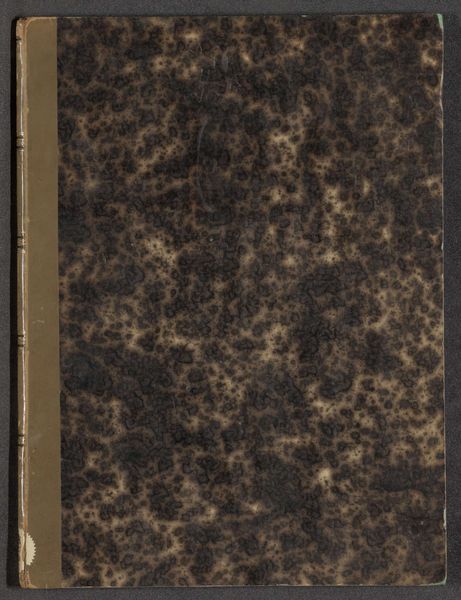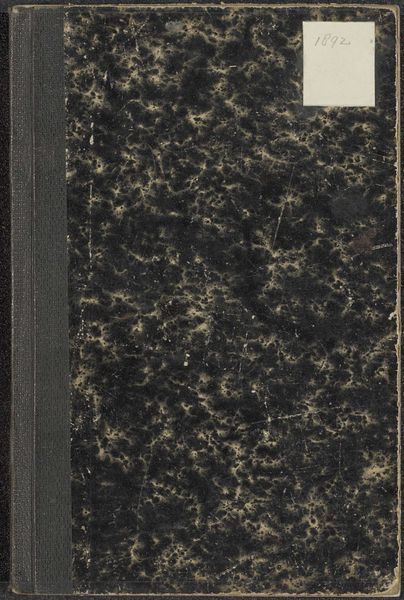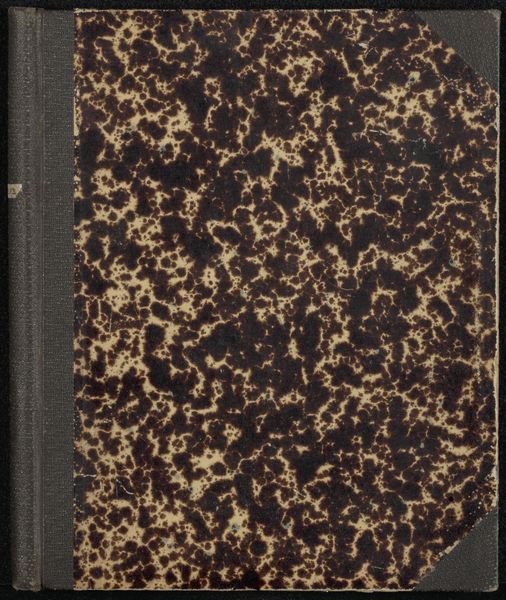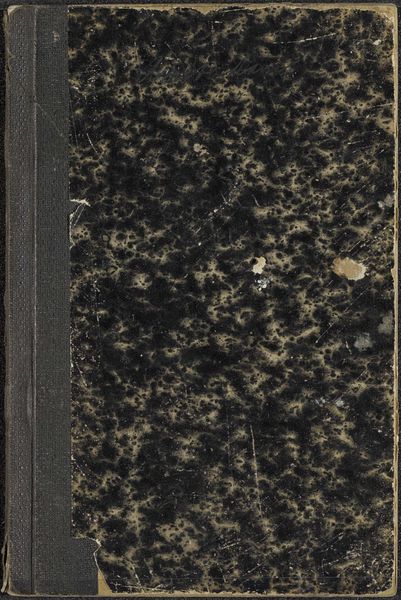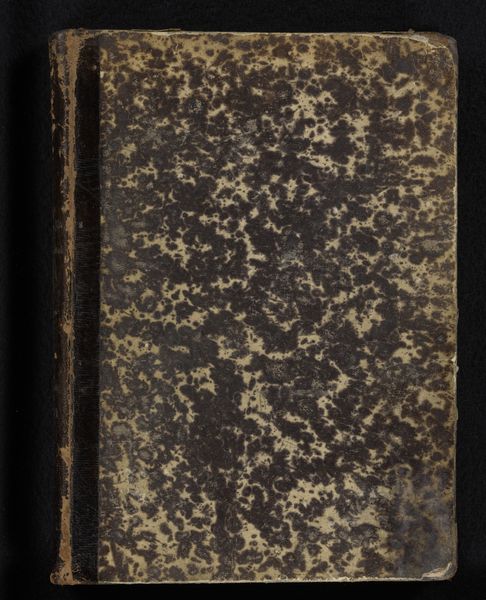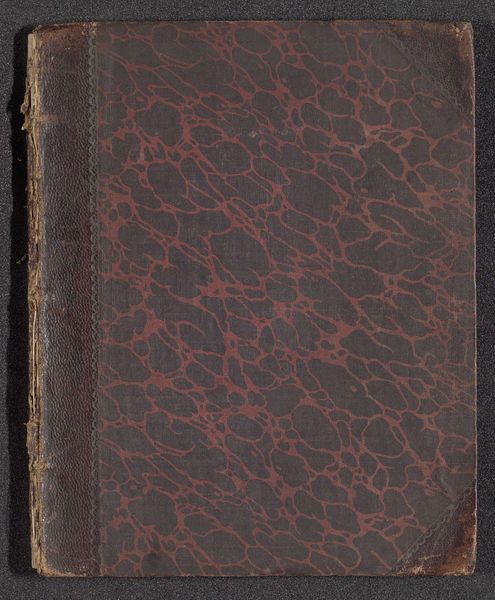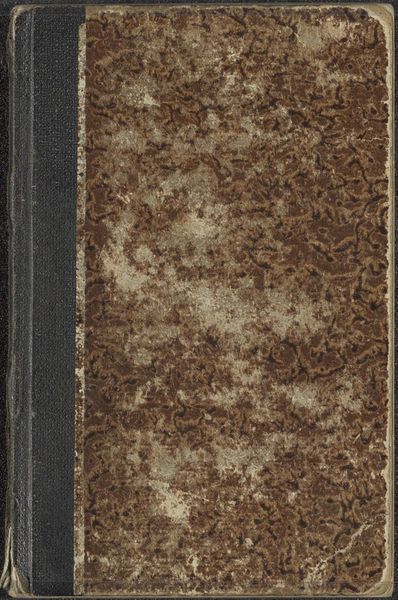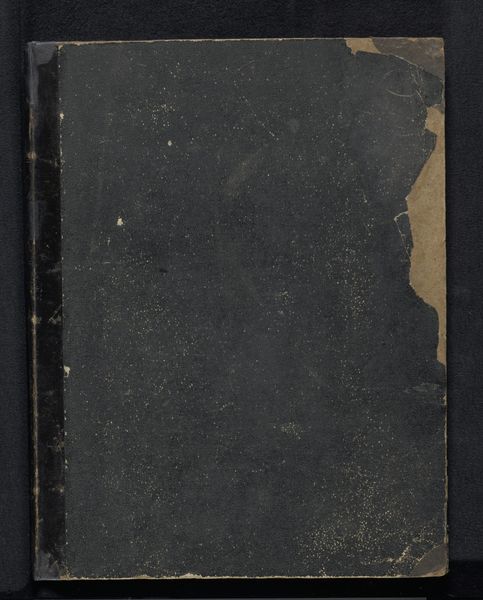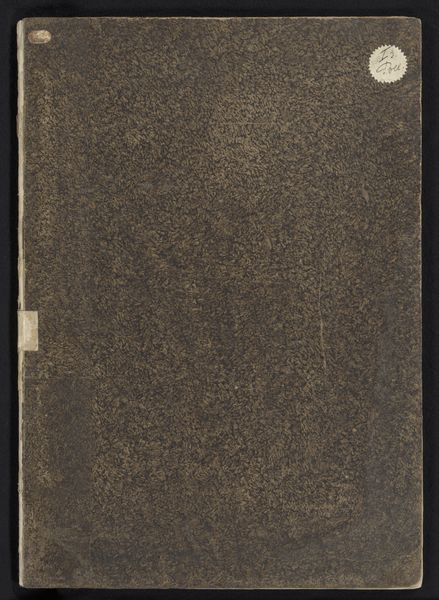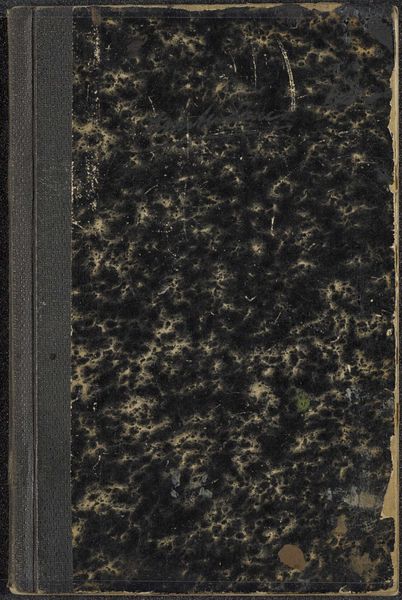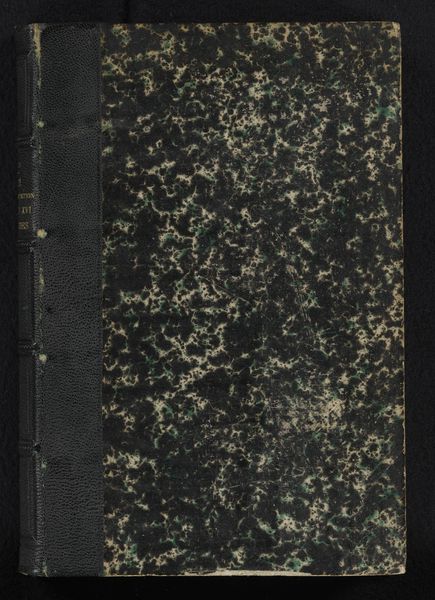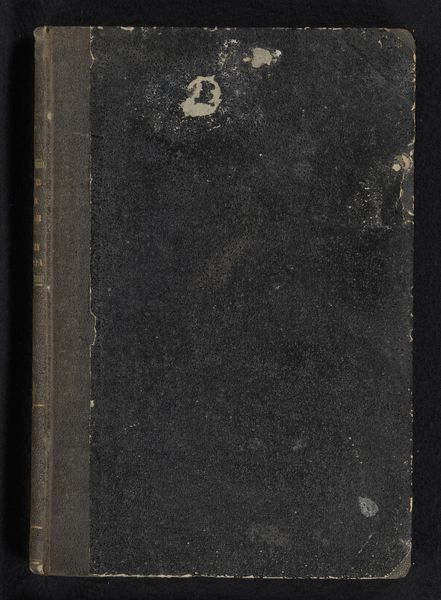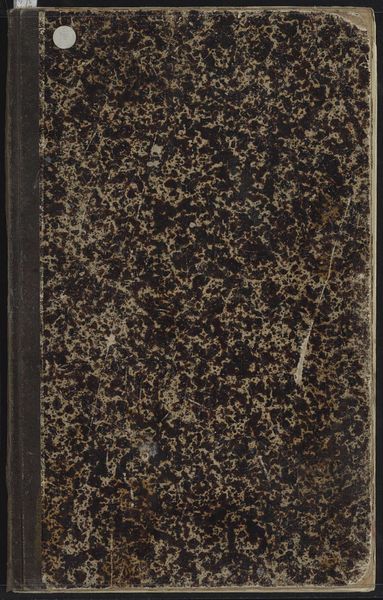
drawing, mixed-media, paper, architecture
#
drawing
#
mixed-media
#
dutch-golden-age
#
landscape
#
paper
#
architecture
Dimensions: height 335 mm, width 212 mm, thickness 13 mm, width 419 mm
Copyright: Rijks Museum: Open Domain
Editor: Here we have Gerrit Willem Dijsselhof's "Sketchbook with 79 leaves", created around 1901. It's currently housed in the Rijksmuseum and utilizes drawing and mixed media on paper. Initially, it gives off an impression of aged secrecy, a closed portal into the artist’s mind. What symbols do you see at play in the mere presentation of a sketchbook? Curator: A sketchbook, particularly from this period, isn't simply a collection of pages; it is a testament to a thought process, a private world made tangible. The closed cover, the almost marbled texture, whispers of alchemy and hidden knowledge. Consider, even, the Dutch Golden Age context hinted at in the metadata. Do you see parallels between the burgeoning merchant class, chronicled in the paintings of that earlier era, and this intimate glimpse into an individual's creative enterprise? Editor: That’s an interesting link. I hadn’t thought about it as a kind of portrait of creativity, reflective of a societal value. Is the materiality itself – the paper, the potential drawings within – significant, beyond just being the 'support' for the art? Curator: Precisely. Paper, then as now, suggests potential, the blank slate. It implies possibility and the active human hand – the power to transform the mundane into the meaningful. In viewing this object, ask yourself what other concealed narratives or intentions can be understood? The ‘closed’ nature reminds one of secrets… what does it not reveal to us? Editor: So, it’s not just what’s inside, but the very idea of containment, of curated thoughts and sketches, that speaks volumes about artistic creation. I am getting a different, more appreciative sense of the artwork now. Curator: Exactly. By understanding its context and hidden symbolic potential, even an apparently simple sketchbook transforms into a rich historical artifact.
Comments
No comments
Be the first to comment and join the conversation on the ultimate creative platform.
